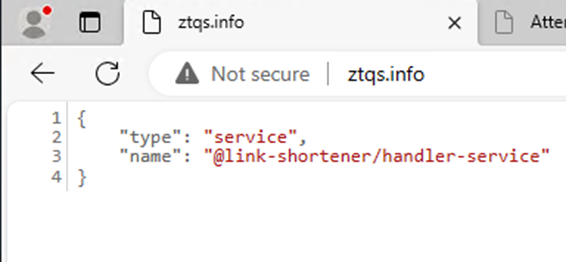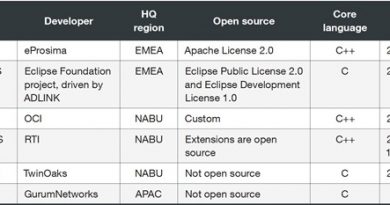Play Ransomware Group’s New Linux Variant Targets ESXi, Shows Ties With Prolific Puma

Summary:
- The Play ransomware group, known for its double-extortion tactic, now has a Linux variant targeting ESXi environments.
- Most attacks this year have been concentrated in the US.
- This ransomware verifies if it is running on an ESXi environment before executing. It has successfully evaded security measures, as indicated by VirusTotal.
- The Play ransomware group appears to be using the services and infrastructure peddled by the Prolific Puma group.
Our Threat Hunting team uncovered a Linux variant of the Play ransomware that only encrypts files when running in a VMWare ESXi environment. First detected in June 2022, the Play ransomware group became notable for its double-extortion tactic, evasion techniques, custom-built tools, and substantial impact on various organizations in Latin America.
This is the first time that we’ve observed Play ransomware targeting ESXi environments. This development suggests that the group could be broadening its attacks across the Linux platform, leading to an expanded victim pool and more successful ransom negotiations.
VMWare ESXi environments are commonly used by businesses to run multiple virtual machines (VMs). They often host critical applications and data, and normally include integrated backup solutions. Compromising them can significantly disrupt business operations and even encrypt backups, which further reduces the victim’s capability to recover data.


The submitted sample in VirusTotal indicates that it has managed to evade security detections. In our analysis, we found that the Linux variant is compressed in a RAR file with its Windows variant and is hosted in the URL, hxxp://108.[BLOCKED].190/FX300.rar.

This IP address contains tools that were used by Play ransomware in their previous attacks — including PsExec, NetScan, WinSCP, WinRAR, and the Coroxy backdoor.

Figure 4 shows the infection chain of this ransomware variant. Though no actual infection has been observed, the command-and-control (C&C) server hosts the common tools that Play ransomware currently uses in its attacks. This could denote that the Linux variant might employ similar tactics, techniques, and procedures (TTPs).
Infection Routine of the Linux Variant of Play Ransomware
Like its Windows variant, the sample accepts command-line arguments, but their behaviors are still unknown.
|
Play Ransomware Windows Variant |
Description |
Play Ransomware Linux Variant |
Description |
|
-mc |
Execute normal functionality; same as no command-line argument |
-p |
N/A |
|
-d <drive path> |
Encrypt a specific drive |
-f |
N/A |
|
-ip <shared resource path> <username> <password> |
Encrypt network shared resource |
-s |
N/A |
|
-p <path> |
Encrypt a specific folder/file |
-e |
N/A |
Table 1. The command-line arguments of the Windows and Linux variants of Play ransomware include commands for encrypting drives, files, and network shared resources.
The sample runs ESXi-related commands to check that it is running in an ESXi environment before performing its malicious routines. Otherwise, it will terminate and delete itself.

We also found a series of shell script commands that the sample executes once it is running in an ESXi environment. The command below is responsible for scanning and powering off all VMs found in the environment:
/bin/sh -c “for vmid in $(vim-cmd vmsvc/getallvms | grep -v Vmid | awk ‘{print $1}’); do vim-cmd vmsvc/power.off $vmid; done”

This command is responsible for setting a custom welcome message on the ESXi host:
/bin/sh -c “esxcli system welcomemsg set -m=\”
Once the ransomware executes the series of ESXi-related commands, it proceeds to encrypt VM files, including VM disk, configuration, and metadata files. The VM disk file, for example, contains critical data, including applications and user data.

After completing the process, most of the encrypted files inside the guest OS “ubuntu” (as an example) are appended with the extension “.PLAY”.

It will also drop a ransom note in the root directory, which is also displayed in the login portal of the ESXi client.



Exploring the Connection Between Prolific Puma and Play Ransomware
Monitoring the external activities of the suspicious IP address, we saw that the URL used to host the ransomware payload and its tools is related to another threat actor, which is named Prolific Puma.
Prolific Puma is known to generate domain names using a random destination generator algorithm (RDGA) and utilizes them to offer a link-shortening service to fellow cybercriminals, who then use it to avoid detection while disseminating phishing schemes, scams, and malware.

|
SUBJECT |
SUBJECT-TYPE |
INDICATOR |
DETECTION |
DESCRIPTION |
|
108][.]61[.]142[.]190 |
IP address |
hxxp://108 [.]61[.]142[.]190/ FX300.rar |
95 – Ransomware |
Hosting URL for Play Ransomware binary |
|
108 [.]61[.]142[.]190 |
IP address |
hxxp://108 [.]61[.]142[.]190/ 1.dll.sa |
79 -Disease Vector |
Hosting URL for Coroxy backdoor |
|
108 [.]61[.]142[.]190 |
IP address |
hxxp://108 [.]61[.]142[.]190/ 64.zip |
79 – Disease Vector |
Hosting URL for NetScan |
|
108 [.]61[.]142[.]190 |
IP address |
hxxp://108 [.]61[.]142[.]190/ winrar-x64-611.exe |
Untested |
Hosting URL for WinRAR |
|
108 [.]61[.]142[.]190 |
IP address |
hxxp://108 [.]61[.]142[.]190/ PsExec.exe |
Untested |
Hosting URL for PsExec |
|
108 [.]61[.]142[.]190 |
IP address |
hxxp://108 [.]61[.]142[.]190/ host1.sa |
78 – Malware Accomplice |
Hosting URL for Coroxy backdoor |
Table 2. The different tools of Play ransomware resolve to several IP addresses.
|
SUBJECT |
SUBJECT-TYPE |
INDICATOR |
INDICATOR-TYPE |
REGISTRAR |
|
108 [.]61[.]142[.]190 |
IP address |
ztqs[.]info |
Domain (RDGA) |
Porkbun, LLC |
|
108 [.]61[.]142[.]190 |
IP address |
zfrb[.]info |
Domain (RDGA) |
Porkbun, LLC |
|
108 [.]61[.]142[.]190 |
IP address |
xzdw[.]info |
Domain (RDGA) |
Porkbun, LLC |
|
108 [.]61[.]142[.]190 |
IP address |
iing[.]info |
Domain (RDGA) |
Porkbun, LLC |
|
108 [.]61[.]142[.]190 |
IP address |
mcmb[.]info |
Domain (RDGA) |
NameCheap, Inc |
|
108 [.]61[.]142[.]190 |
IP address |
lcmr[.]info |
Domain (RDGA) |
NameCheap, Inc |
|
108 [.]61[.]142[.]190 |
IP address |
thfq[.]info |
Domain (RDGA) |
NameCheap, Inc |
|
108 [.]61[.]142[.]190 |
IP address |
hibh[.]info |
Domain (RDGA) |
NameCheap, Inc |
|
108 [.]61[.]142[.]190 |
IP address |
iwqe[.]info |
Domain (RDGA) |
NameCheap, Inc |
|
108 [.]61[.]142[.]190 |
IP address |
ukwc[.]info |
Domain (RDGA) |
NameCheap, Inc |
|
108 [.]61[.]142[.]190 |
IP address |
apkh[.]info |
Domain (RDGA) |
NameCheap, Inc |
|
108 [.]61[.]142[.]190 |
IP address |
vqbl[.]info |
Domain (RDGA) |
NameSilo, LLC |
|
108 [.]61[.]142[.]190 |
IP address |
vgkb[.]info |
Domain (RDGA) |
NameSilo, LLC |
|
108 [.]61[.]142[.]190 |
IP address |
znuc[.]info |
Domain (RDGA) |
NameSilo, LLC |
Table 3. The IP addresses hosting the Play ransomware resolves to different domains.


Tables 2 and 3 display the domains, particularly DGAs, that resolve to the IP address alongside the Play ransomware toolkit. These domains are registered under different registrar names. Our research indicates that Prolific Puma typically uses three to four random characters on their registered domain. The sample registered domains by Prolific Puma in the tables match the domains that resolve to the IP address associated with Play ransomware.
Additionally, the message showed when accessing one of the domains matches the one mentioned by other security researchers.


To further verify the connection between the two groups, the team also tested the Coroxy backdoor hosted in the same IP address. Black-box analysis shows that the Coroxy backdoor was observed connecting to 45[.]76[.]165[.]129. This IP address also resolves to various domains associated with Prolific Puma.

|
SUBJECT |
SUBJECT-TYPE |
INDICATOR |
INDICATOR-TYPE |
REGISTRAR |
|
45[.]76[.]165[.]129 |
IP address |
jhrd[.]me |
Domain (RDGA) |
NameSilo, LLC |
|
45 [.]76[.]165[.] 129 |
IP address |
pkil[.]me |
Domain (RDGA) |
NameSilo, LLC |
|
45 [.]76[.]165[.] 129 |
IP address |
kwfw[.]me |
Domain (RDGA) |
NameSilo, LLC |
|
45 [.]76[.]165[.] 129 |
IP address |
whry[.]me |
Domain (RDGA) |
NameSilo, LLC |
|
45 [.]76[.]165[.] 129 |
IP address |
pxkt[.]me |
Domain (RDGA) |
NameSilo, LLC |
|
45 [.]76[.]165[.] 129 |
IP address |
ylvq[.]me |
Domain (RDGA) |
NameSilo, LLC |
|
45 [.]76[.]165[.]129 |
IP address |
flbe[.]link |
Domain (RDGA) |
NameSilo, LLC |
|
45 [.]76[.]165[.]129 |
IP address |
mmhp[.]link |
Domain (RDGA) |
NameSilo, LLC |
|
45 [.]76[.]165[.] 129 |
IP address |
gunq[.]link |
Domain (RDGA) |
NameSilo, LLC |
|
45 [.]76[.]165[.] 129 |
IP address |
ojry[.]link |
Domain (RDGA) |
NameSilo, LLC |
|
45 [.]76[.]165[.] 129 |
IP address |
bltr[.]me |
Domain (RDGA) |
NameSilo, LLC |
Table 4. Different domains resolve to the IP address of the Coroxy backdoor connection.
The IP address that the Coroxy backdoor connects to also resolves to different domains that matches the registered domains of Prolific Puma. By further examining the IP address, “vultrusercontent.com” is appended and matches the original IP, as shown in Figure 17.

Comparison of the IP address that hosted Play ransomware and its tools with another IP address related to Prolific Puma shows that both IP addresses have the same autonomous system number (ASN). This means that they belong in the same network and are being managed by the same network provider.

Prolific Puma is discerning in its client selection process, preferring to engage with individuals or groups deemed deserving of its services. Given the established reputation of the threat actors behind Play ransomware, they might be considered a suitable candidate to access Prolific Puma’s offerings. These findings suggest a potential collaboration between these cybercriminal entities. The Play ransomware group, too, might be seeking to enhance its capabilities in circumventing defensive security protocols through Prolific Puma’s services.
Mitigating ransomware attacks on ESXi environments
ESXi environments are high-value targets for ransomware attacks due to their critical role in business operations. The efficiency of encrypting numerous VMs simultaneously and the valuable data they hold further elevate their lucrativeness for cybercriminals. To mitigate risks and exposure to these attacks, organizations should implement several best practices:
- Regular patching and updates: Keep the ESXi environment and associated management software up to date to protect against known vulnerabilities.
- Virtual patching: Many organizations may not patch or update their ESXi environments as frequently as they should due to complexity, downtime concerns, resource constraints, operational priorities, or compatibility issues. Virtual patching helps by applying security measures at the network level to protect vulnerable systems, mitigating risks without needing to alter the underlying software immediately.
- Addressing inherent misconfigurations: Regularly audit and correct misconfigurations within ESXi environments, as these can create vulnerabilities that ransomware can exploit. Implementing strong configuration management practices can help ensure that settings adhere to security best practices and reduce the risk of exploitation.
- Strong access controls: Implement robust authentication and authorization mechanisms, such as multifactor authentication (MFA), and restrict administrative access.
- Network segmentation: Segregate critical systems and networks to limit the spread of ransomware.
- Minimized attack surface: Disable unnecessary and unused services and protocols, restrict access to critical management interfaces, and implement strict firewall rules to limit network exposure. VMWare provides various guidelines and best practices on how to secure ESXi environments.
- Regular offline backups: Maintain frequent and secure backups of all critical data. Ensure that backups are stored offline and tested regularly to verify their integrity.
- Security monitoring and incident response: Deploy solutions and develop an incident response plan to promptly and proactively address suspicious activities.
Trend Micro Vision One Hunting Query
The following text lists potentially useful queries for threat hunting within Vision One:
- malName:*Linux.PLAYDE* AND eventName:MALWARE_DETECTION
Indicators of Compromise (IoC)
|
IOC |
Detection |
Description |
|
2a5e003764180eb3531443946d2f3c80ffcb2c30 |
Ransom.Linux.PLAYDE.YXEE3T |
ELF Binary |
|
hxxp://108.61.142[.]190/FX300.rar |
95 – Ransomware |
Hosting URL for Play Ransomware Binary |
|
108.61.142[.]190 |
Untested |
Observed IP address |
|
hxxp://108.61.142[.]190/1.dll.sa |
79 – Disease Vector |
Hosting URL for Coroxy Backdoor |
|
hxxp://108.61.142[.]190/64.zip |
79 – Disease Vector |
Hosting URL for NetScan |
|
hxxp://108.61.142[.]190/winrar-x64-611.exe |
Untested |
Hosting URL for WinRAR |
|
hxxp://108.61.142[.]190/PsExec.exe |
Untested |
Hosting URL for PsExec |
|
hxxp://108.61.142[.]190/host1.sa |
78 – Malware Accomplice |
Hosting URL for Coroxy Backdoor |
MITRE ATT&CK Tactics and Techniques:
|
Tactic |
Tactic |
ID |
|
Defense Evasion |
File Deletion |
T1070.004 |
|
Discovery |
Network Service Discovery |
T1046 |
|
File and Directory Discovery |
T1083 |
|
|
Execution |
Command and Scripting Interpreter: Unix Shell |
T1059.004 |
|
Lateral Movement |
Lateral Tool Transfer |
T1570 |
|
Command and Control |
Dynamic Resolution: Domain Generation Algorithms |
T1568.002 |
|
Ingress Tool Transfer |
T1105 |
|
|
Exfiltration |
Exfiltration over C&C Channel |
T1041 |
|
Impact |
Data Encrypted for Impact |
T1486 |
|
Defacement: Internal Defacement |
T1491.001 |
|
|
Service Stop |
T1489 |
Tags
sXpIBdPeKzI9PC2p0SWMpUSM2NSxWzPyXTMLlbXmYa0R20xk
Read More HERE





